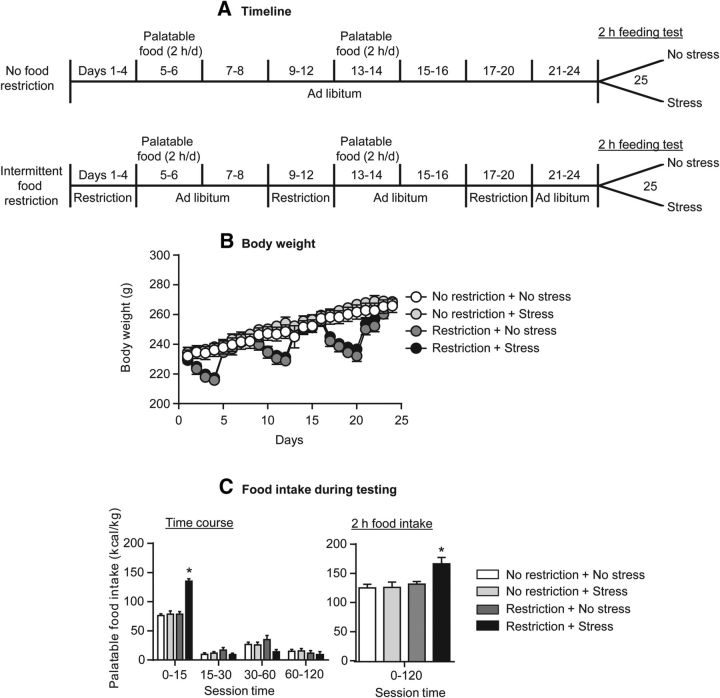Figure 1.
Increased palatable food intake in rats with a history of intermittent food restriction that were exposed to frustration stress before the feeding test. A, Timeline of the experimental procedures for the food nonrestricted (top) and restricted (bottom) rats. B, Mean ± SEM body weight (grams) of female rats exposed or not exposed to repeated intermittent cycles of food restriction/refeeding. C, Mean ± SEM palatable food intake at different time points during testing (left) and total 2 h food intake (right) in the vehicle-injected rats in Experiment 1. *p < 0.05, different from the other three groups; n = 6–8 per group.

